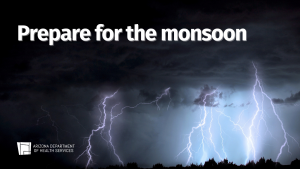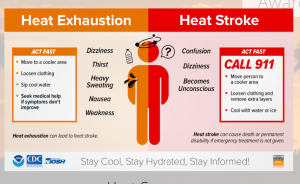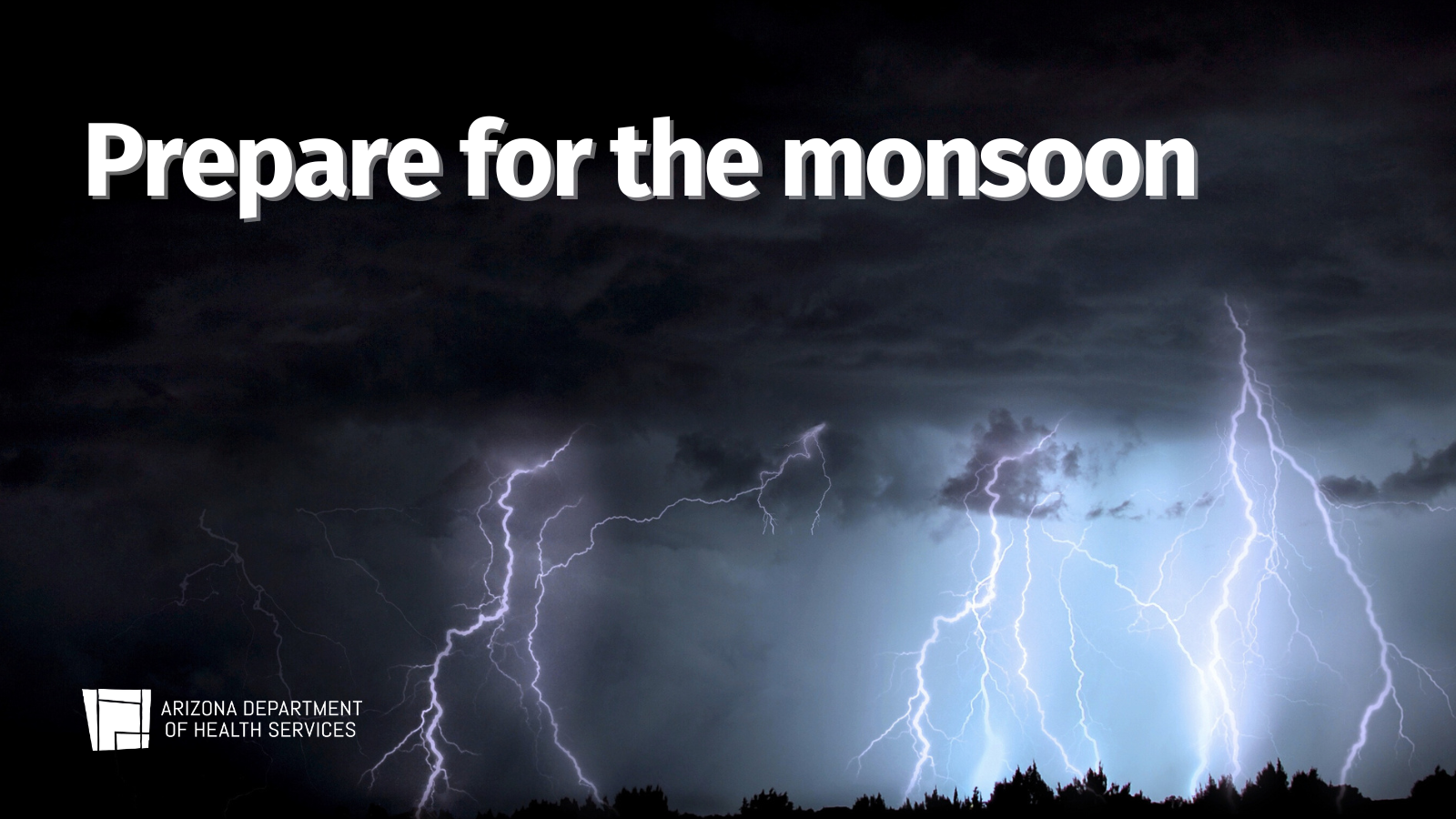 While it may feel like summer is just kicking off, the monsoon season has officially started and that means some safety measures should be mixed in with your summer fun.
While it may feel like summer is just kicking off, the monsoon season has officially started and that means some safety measures should be mixed in with your summer fun.
What is the North American Monsoon? The monsoon involves changes in seasonal winds that can cause extreme weather conditions including extreme heat, dust storms, sudden downpour, lightning, flash flooding, and wildfires. By learning more about how monsoon weather can impact your health and taking steps to be prepared, you can ensure you and your loved ones have a safe monsoon season.
Last week was Monsoon Awareness Week and Arizona’s monsoon season runs from June 15 to September 30 and can create potentially life-threatening circumstances for Arizonans, making it a great time to get prepared for extreme weather.
Preparing for heat
Monsoons cause rapid changes in moisture and heat, and Arizona’s extreme heat causes illnesses and death every year. You can prevent heat-related illness by taking steps including:
- Drinking plenty of water
Start drinking before you feel thirsty! Drink at least two liters (8+ cups) of water each day, even if you’re mostly indoors. Outdoor workers, anyone who is outside in high temperatures, those engaging in physical activity, and individuals who have certain health conditions should increase their intake. - Dressing for the heat
Lightweight, light-colored clothing can help protect you from sun damage and heat illness. - Staying indoors
Go inside during the hottest parts of the day and avoid outdoor strenuous activity when temperatures are high. If you do physical activity on warm days, take regular breaks in a cool place. - Knowing the symptoms of heat-related illness
Heat illness progresses from thirst to heat cramps, heat exhaustion, and heat stroke. - Using heat forecast tools to check the weather and know your risk of health impacts from heat and UV radiation.

- Many more resources are available for monsoon awareness all season long.
Preparing for flooding and wildfires
Arizona has a reputation for being dry and hot, but during monsoon season the risk of flooding is real. Injuries from flooding occur every year and people lose their lives because they’re trapped by storms or rushing floodwaters.
Flood conditions can develop quickly and without warning after a heavy rain in Arizona’s dry and rocky soil, especially in locations that were previously affected by wildfire. Washes, dry channels, slot canyons, ditches, and lake beds can fill rapidly and create a strong and violent current. In rural and urban areas, water can also collect in roadways and low lying areas creating traffic hazards.
You can protect yourself from the effects of flooding by taking steps including:
- Creating a disaster supply kit & emergency plan
Having a well-equipped disaster supply kit prepared in advance can help keep you and your loved ones safe and comfortable in an emergency. Creating a detailed emergency plan with specific information for each member of your home can ensure everyone in your household has what they need and knows when to stay and when to evacuate. - Avoiding moving water
Whether on foot or in a car, avoid entering into moving water if possible. Just six inches of moving water can knock you down, and a foot of moving water can sweep your vehicle away. If you’re driving and encounter heavy rainfall, avoid areas where water is pooling in travel lanes as well as sudden braking which can cause you to slide on the wet pavement, and don’t enter flood prone areas. - Securing your home during a flood
Deploy flood barriers like sandbag floodwalls, bring outdoor furniture inside, move essential items to higher locations, turn off utilities at the main switches or valves, and protect items like important documents.
- Using proper sanitation and food safety
Avoid illness that can be caused by sewage and other waste in flood water by sanitizing hands with clean water or hand sanitizer. Don’t consume food or water exposed to flood water. Don’t eat food that’s been at room temperature for more than two hours, or with an unusual odor, color, or smell.
Preventing Valley fever
Valley fever is a lung infection caused by a fungus that grows in Arizona soil. Monsoons can cause dust storms that disturb the soil, bringing the fungus into the air where it can be breathed in by people and pets.
Some symptoms can last for weeks or even months. Most people with symptoms will get better without treatment. However, some people may develop severe symptoms of the disease.
Avoid exposure to Valley fever by:
- Staying inside during dust storms and close your windows
- Avoiding areas with a lot of dust
Stay away from areas like construction or excavation sites, especially during strong winds or storms. If you can’t avoid these areas, wear an N95 respirator mask while you’re there.
- Avoiding activities that involve close contact to dirt or dust
Avoid activities like yard work, gardening, and digging, especially during strong winds or storms. Clean skin injuries well with soap and water to reduce the chances of developing a skin infection, especially if the wound was exposed to dirt or dust. - Knowing the symptoms of Valley fever and asking your doctor to test for it if you suspect you have it
Cough, fever, exhaustion, rash, chest pain, night sweats, joint pain, muscle aches, headaches, weight loss, and lack of appetite are all signs of Valley fever.
Preparing for mosquito-borne illness
Monsoon rains can provide ample breeding ground for mosquitoes, which can spread illnesses including West Nile virus.
Take steps to prevent mosquito bites and illnesses by:
- Using insect repellent that contains DEET or another Environmental Protection Agency registered insect repellent.
- Wearing long-sleeved shirts and long pants
- Dumping standing water around your house and taking steps to prevent mosquito breeding sites in your home and yard.
- Using air conditioning and ensuring your window and door screens are intact to keep mosquitoes out.
Stay safe with these tips this monsoon season and all summer long. For more resources and tips, check out these additional resources and visit our website for extreme weather tips, summer safety info, and heat warnings.










